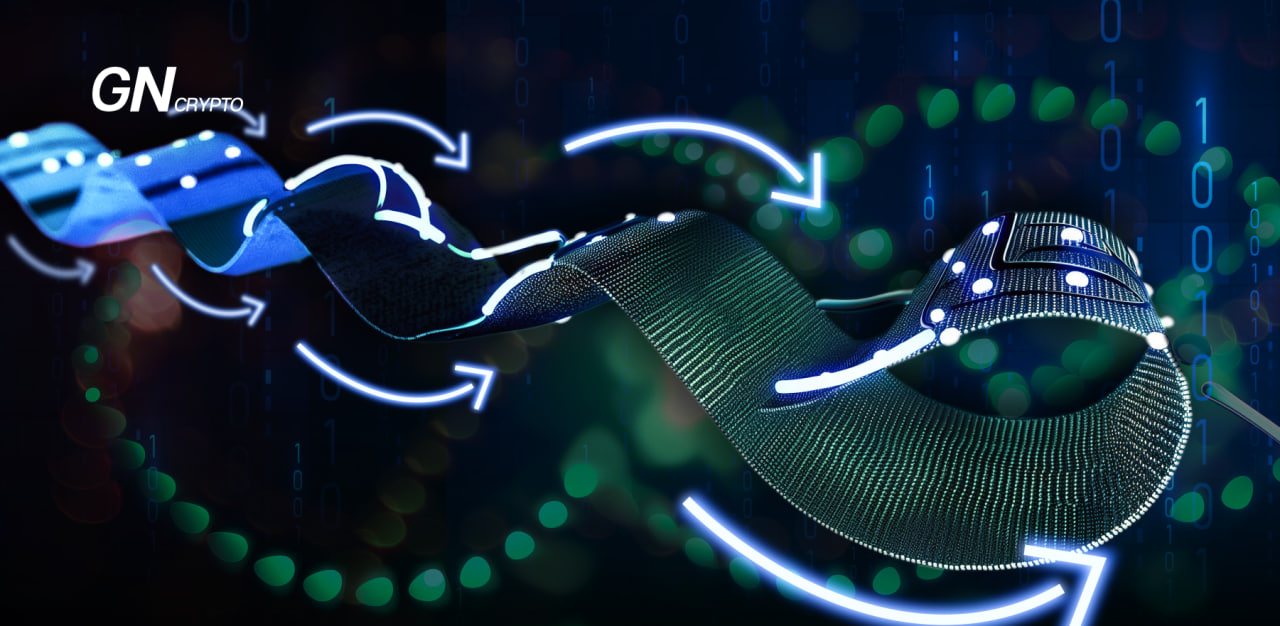What is a Directed Acyclic Graph (DAG)?

Picture a blockchain without a sequential chain of transactions. Instead, it resembles a branching network of blocks interconnected in a seemingly chaotic manner. This describes a Directed Acyclic Graph (DAG). Let’s explore the nuances of its architecture.
On this page
A Directed Acyclic Graph (or DAG) is a data structure made up of nodes (sometimes referred to as “vertices”) and directed edges (or “arcs”) that connect these nodes. The distinctive feature of the DAG architecture is its lack of complete cycles. This means that it is impossible to loop back to the original node (referred to as the “genesis block” in traditional blockchain) by following the edges from one node to another.
What distinguishes a DAG?
Traditional blockchains store information in a linear sequence, similar to a linked list, where each new transaction is appended to the previous one to form a chain. Although this method is secure, it restricts both scalability and transaction speed.
For details on how blocks and chains are formed in traditional blockchains, you can read further here.
DAG introduces a paradigm shift with its “topological ordering.” Here, transactions are validated based on their connections to multiple preceding transactions, not merely the most recent one. This ensures that each new transaction is inherently non-cyclical and independent.
Here's how it operates:
- To add a new transaction to the network, a user (who is also a validator) must confirm several previous transactions.
- Subsequently, the newly added transaction becomes unconfirmed (pending).
- Once the last unconfirmed transaction is validated along with other pending transactions, it will be executed, and its information will be stored in several new nodes.
The non-linear connection between blocks enables parallel processing of information, greatly enhancing processing speed. Moreover, it reduces the network's dependence on “hired” validators, as there is no need to confirm each transaction individually. Consequently, DAG requires fewer “service personnel.” It is more robust and dependable than other data structures since the failure of one node does not impact the functioning of others—the responsibilities of the failed node are easily redistributed to others that store the same information about validated transactions.
The Directed Acyclic Graph (DAG) resembles a web or a branching tree. Source: Medium
How does a DAG work?
- Data about confirmed transactions are stored within nodes, similar to how they're housed in blocks in a traditional blockchain.
- The edges specify the direction of connection between nodes. Unlike sequential links in traditional blockchains, nodes in a DAG are connected on a many-to-many basis.
- Information flows strictly in one direction: from older to newer data. DAGs are designed with specific algorithms that prevent revisiting any previously formed node, hence the name “directed graph.”
- New data nodes are appended at the end of the graph, mirroring the addition of new blocks in classical blockchains.
This branching structure enhances scalability compared to linear blockchain models. As the network expands, the rate of information flow remains consistently high. The extensive interconnections within a DAG alleviate the burden on any single node from having to carry the data of all preceding ones—information is more evenly distributed across the network.
This structural efficiency not only increases network throughput significantly but also reduces the time required to confirm transactions to mere milliseconds.
Challenges of DAG-based blockchains
So, if DAGs offer faster transactions and easier scalability, why haven’t they become as popular as traditional blockchains?
The key reasons:
- DAGs are inherently more complex to understand and implement than linear blockchains, which can deter developers and businesses considering blockchain integration.
- Keeping multiple DAG-based networks synchronized in a decentralized environment presents significant technical challenges. Successful development of cross-chain bridges between such intricate systems has yet to be achieved.
- Ensuring the security of a DAG-based blockchain might necessitate centralized control measures, which contradicts the decentralization ethos that many blockchain developers adhere to.
However, DAG technology is relatively new and continues to evolve. However, these challenges may be addressed and overcome as the technology matures.
Which projects are using DAG technology?
Networks based on DAG avoid energy-intensive mining, thereby eliminating the need for costly hardware and excessive electricity consumption. As a result, transaction fees in these networks are drastically lower than in traditional blockchains, sometimes by hundreds of times. This efficiency has made DAG an appealing option for certain cryptocurrency initiatives, such as IOTA and the corporate-focused Hedera Hashgraph.
IOTA has tailored its DAG-based platform to serve the Internet of Things (IoT), enabling devices to perform microtransactions without incurring fees. Hedera Hashgraph, meanwhile, targets the private financial services sector, operating without the need for integration with other blockchains or reliance on external users.
Filecoin also leverages a form of DAG technology. It operates as a decentralized file storage solution, an alternative to centralized services like Dropbox, Google Drive, and Amazon.
Filecoin uses the GraphSync protocol, which synchronizes parts of its blockchain across devices, thus enabling efficient data synchronization among devices that hold fragments of files in a peer-to-peer network.
However, the scope of DAG technology extends well beyond these applications.
DAGs are also potential foundations for decentralized social networks where each user functions as a node, with relationships between users forming the connections that facilitate information transfer, such as message exchanges.
Additionally, DAGs are suitable for tracking revisions in files or documents, making them invaluable for software versioning and debugging during updates.
The capabilities and potential uses of DAG technology are vast and still largely untapped.
The content on The Coinomist is for informational purposes only and should not be interpreted as financial advice. While we strive to provide accurate and up-to-date information, we do not guarantee the accuracy, completeness, or reliability of any content. Neither we accept liability for any errors or omissions in the information provided or for any financial losses incurred as a result of relying on this information. Actions based on this content are at your own risk. Always do your own research and consult a professional. See our Terms, Privacy Policy, and Disclaimers for more details.


























